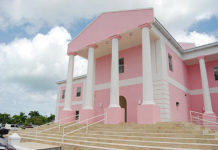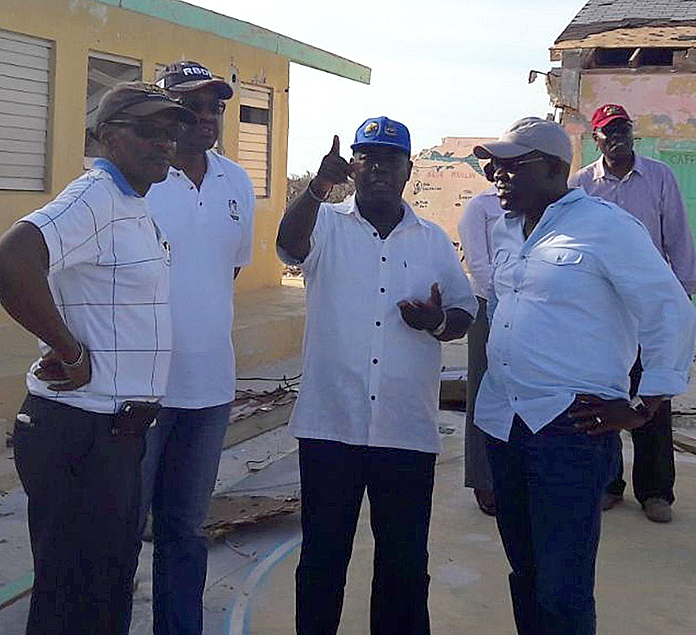
SOUTHERN BAHAMAS – The road to recovery for residents of those Bahamian islands negatively impacted by Hurricane Irma began with “serious determination,” Monday (September 11, 2017).
Prime Minister, Dr. the Hon. Hubert A. Minnis and a team of senior Administration officials took the first, critical steps on the road to recovery from Hurricane Irma Monday, visiting the three islands in the Southern Bahamas that were most impacted by the very dangerous Category 4 storm, September 8, 2017.
They were there to get on-the-ground briefings from Damage Assessment Teams that traveled as part of the Prime Minister’s delegation, and to speak with residents – some of whom decided to “ride out” the dangerous storm.
Dr. Minnis was also briefed by Initial Damage Assessment Teams – particularly officers of the Royal Bahamas Police and Defence Forces and Local Government officials — who would have gone into the affected areas in the immediate aftermath of the storm.
The work of the Initial Damage Assessment Teams and the Damage Assessment Teams is critical in Disaster Management, as their assessments will be used to help provide Government planners with a road map towards determining the appropriate course of action to be taken on the path to recovery.
Prime Minister Minnis was scheduled to visit the islands on Sunday (September 10, 2017) after the ‘All Clear’ was given for the Southern Bahamas, but severe headwinds in New Providence forced aviators to push back Dr. Minnis’ visit to Monday.
The Prime Minister was accompanied by Minister of Works, the Hon. Desmond Bannister; Minister of Agriculture and Marine Resources, the Hon. Renward Wells; Minister of Education, the Hon. Jeffrey Lloyd; Minister of Health, Dr. the Hon. Duane Sands; Minister of Transport and Local Government, the Hon. Frankie Campbell; Minister of Tourism and Aviation, the Hon. Dionisio D’Aguilar; Minister of Foreign Affairs, the Hon. Darren Henfield; Minister of Social Services and Urban Development, the Hon. Lanisha Rolle, and Minister of Labour, Senator, the Hon. Dion Foulkes.
The delegation also comprised Opposition Leader, the Hon. Philip Davis, and administrative, technical and logistics experts from the Office of the Prime Minister; the National Emergency Management Agency (NEMA); Ministry of Works (including those from the Water and Sewerage Corporation and Bahamas Power and Light); and the Ministry of Transport and Local Government; Tourism and Aviation and Agriculture and Fisheries, among others.
The delegation’s first stop was Salina Point, which bore the brunt of Irma’s wrath in Acklins. Homes and small businesses were either destroyed or received some form of damage, while storm surge created by Hurricane Irma brought seawater from the surrounding beach onshore for an estimated several hundred feet in some areas.
The Homecoming site also received damage, as did the cemetery. While there were downed power lines, there was no major damage to poles.
Mr. Mario Virgil, Chief Councilor for Acklins, said the majority of the 234 residents of Salina Point, either evacuated the area or sought shelter elsewhere on the island. Five persons were said to have remained behind to “ride out the storm.” All five have been accounted for and are safe and sound.
Chief Councilor Virgil said the island’s much valued cascarilla bark farming industry was not impacted by the storm, as the majority of the trees are grown in Central Acklins. Cascarilla bark farming and the fishing industry are the two major revenue generators for Acklins.
The island’s crop farming industry– watermelons, peas, honeydews, potatoes, sour limes – also fared well according to Chief Councilor Virgil. High winds did impact the corn crop, however.
The delegation’s next stop was Crooked Island, which sustained little damage to infrastructure. Administrator Leonard Dames said cell and land phone service, electricity and water were “fully functional.”
Early reports indicate that the Clinic and Dock at Landrail Point also sustained some damage. The school in Colonel Hill was “slightly damaged.” A number of seawalls that were under construction were also impacted by the storm.
The final leg of the journey took the delegation to Ragged Island. It was clear to see from the air upon approach, that the island-community, had been ravaged by Hurricane Irma.
Downed power lines and poles snapped in half by hurricane-force winds still littered the community Monday as the Prime Minister and his delegation toured the island to assess and evaluate the damage brought on by Hurricane Irma.
Government buildings (school, police station, clinic, post office), homes and businesses were either flattened by the storm or severely damaged. Many of those that were left standing were only a shell, having had doors and concrete walls torn out; roofs torn off, and windows blown out.
Communications are also out due to the extensive damage caused to the island’s infrastructure.
Navigating the community on foot and in the few vehicles that survived Irma’s wrath, proved a bit tricky as assessment teams and members of the delegation had to manoeuvre around large electricity poles and wires that blocked pathways.
The stench from the rotting carcasses of dead animals was also evident.
Prime Minister Minnis told residents that he was ordering a second round of evacuation for the 17 persons who “rode out the storm,” in their best interest. The evacuations are set to begin Wednesday, September 13, 2017, for those willing to evacuate.
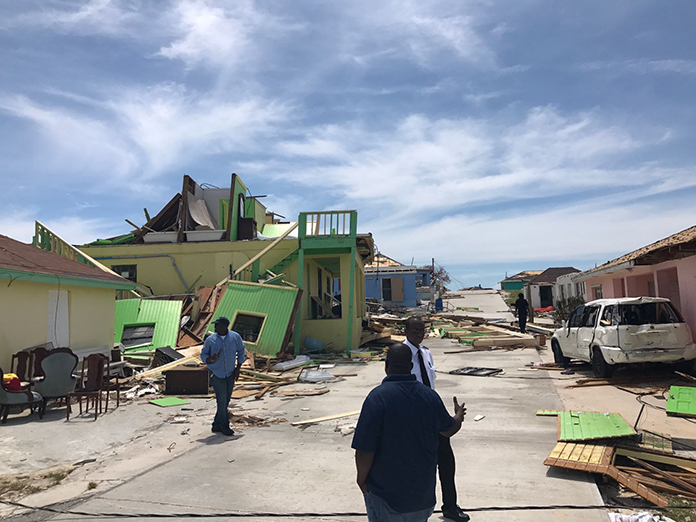



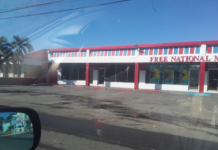
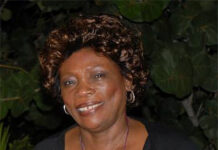

![A Con Artist [RACIST] wants Bahamians to fight progress – WELL, WHAT IS THIS?!](https://www.bahamaspress.com/wp-content/uploads/2025/07/Toby-Smith-218x150.jpg)
